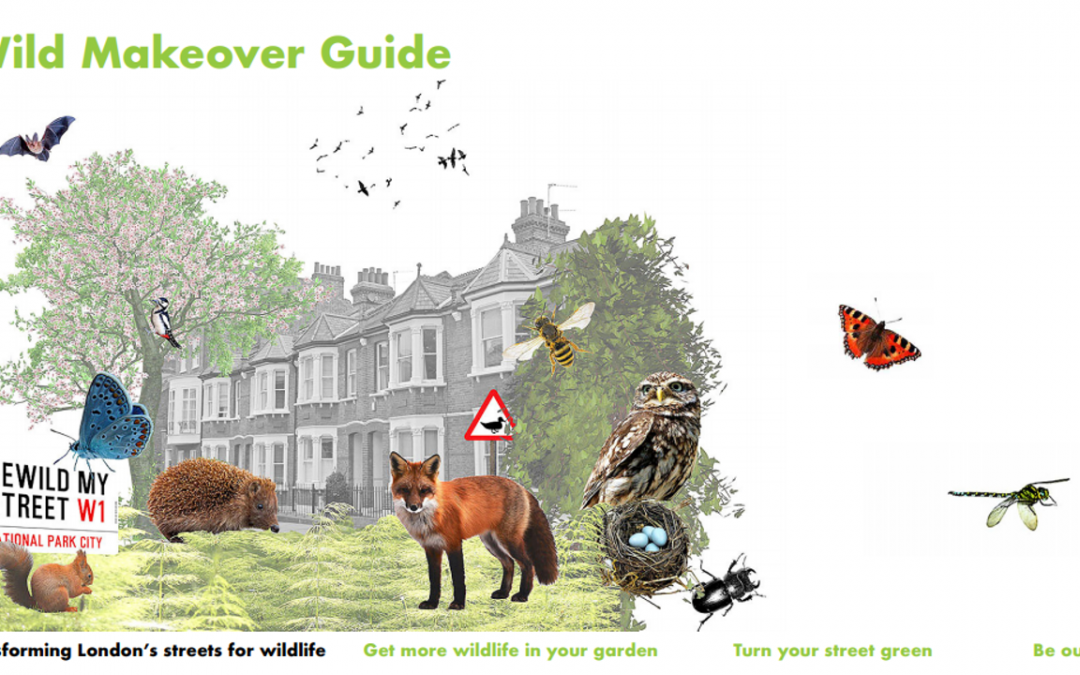Following from creating a site specific proposal based on the planting seed paper in empty planters in public spaces, I have focused my research on ‘rewilding’ and how art can engage with this. Rewilding, in response to the rapidly increasing devastation of climate change, restores Eco-systems to natural processes while introducing missing species.
The term applies to a number of large scale projects such as protecting and expanding ancient woodlands, reducing factory farming and sea fishing and setting aside large areas for nature. In addition to large scale processes, there are smaller changes that can also make a difference, such as, ‘creating a wildlife friendly garden and helping wildlife move through it to help nature on a smaller scale’ (Rewilding Britain). But, how does this fit into a fine art framework?
Many contemporary artists are now making work surrounding this topic. For example, a partnership formed in 2015 between Rewilding Europe and the Artists for Nature Foundation (1990 non-profit formed of over 130 artists) in which various mediums of art such as drawing, painting, printmaking and sculpture are used to draw attention towards the ‘need for nature to be appreciated as an essential element of sustainable development’ (Artists for Nature Foundation).
However, at this stage my research aims were pretty broad and there are plenty of contemporary artists are engaging with these ideas. So, I narrowed down the area of interest to look at artists who do this within London, and happened to stumble upon the project Rewild my Street which is taking place in collaboration with my University, London Met!
The project Rewild My Street approaches environmental issues in an engaging and creative way, it’s run by senior lecturer in Architecture and Interior Design, Sian Moxon and offers resources to make small, but also environmentally innovative changes to streets, homes and gardens in London. This is a project funded by London Met which often collaborates with graduates.
The project ‘combines passion for nature with experience in architecture, academia, and environmental design, offering accessible ‘design-led’ ideas and guidance on re-integrating wildlife into the streets of the City. For example, architectural drawings imagine how a typical London street could be rewilded.
The website rewildmystreet.org provides a range of practical guides for reintroducing biodiversity in and around London homes. For example, how to include a window box planter in which flowers planted would attract insects supporting the ecosystem or simple instructions on making a mini pond using a water tight container such as a washing up bowl.
The ideas and guides provided by Rewild My Street are simplistic, not requiring any previous experience in gardening or rewilding. They are manageable and cost effective too, as the materials and equipment suggested is easy to find. Furthermore, the guides and newsletters can be accessed online for free, which makes this highly accessible. The illustrations, photography and graphic design tie the information together, making it easy to understand, follow and create a vision of what you could create in your own back garden.
Is this public art? At the beginning of doing this research, I was unsure if I was veering off from the (public) fine art pathway and into gardening! On the other hand, the association for public art says that, ‘public art can express community values, enhance our environment, transform a landscape, heighten our awareness, or question our assumptions’ (Balkin Bach).
This is the fundamental process of Rewild My Street; adding more green spaces into a street ‘expresses community values’, ‘transforms’ our urban ‘landscape’, ‘enhances’ the biodiversity of the environment as well as our ‘awareness’ of the issues of climate change while questioning assumptions of what a typical London street should provide. It is also suggested that, ‘to some degree every public art project is an interactive process involving artists, architects, design professionals, community residents’ and so on.
In addition to this, another problem that I encountered while researching not only this work but general tips and ideas for rewilding in the media, and in my own experience, is that it becomes difficult to ‘rewild’ your garden or its surrounding area if you don’t have one. One in eight British households have no garden (office for National Statistics), and in London 21% of households don’t either (City Monitor). This means that just under 1.9 million people living in London do not have access to their own gardening space.
I found that this was addressed in Rewild My Street with future visions of what greener streets could look like, and guides for window box flowers pots, house plants, balcony gardening as well as addressing the issue of the declines in front gardens and encouraging tree planting. This is also something that I am addressing in my own practice which will be highlighted in the next post.
Finally, criticism surrounding rewilding and the steps we can take as individuals can often leave us feeling powerless and impact our choices. But, as artists, whether this is fine art, architecture, photography, performance or public rewilding, we do have a power to evoke change in others as well as ourselves.
Environmental change through art is possible. As chair of Arts Council England puts it, artists can make ‘a vital contribution to the creation of a more inclusive and confident society. Artists have the power to delight, educate, stimulate and inspire, and, at a time of increasing division and inequality, we need their influence more than ever’.
References:
Dickinson, B., 2021. Art Monthly : Article : Art and the Anthropocene. Artmonthly.co.uk. https://www.artmonthly.co.uk/magazine/site/article/art-and-the-anthropocene-by-bob-dickinson Rewilding Britain. 2021. Examples of rewilding. https://www.rewildingbritain.org.uk/explore-rewilding/what-is-rewilding/examples-of-rewilding
Artists for Nature Foundation. 2021. About Us. https://www.artistsfornature.com/about-us/Moxon, S., 2021. Rewild My Street. https://www.rewildmystreet.org
Balkin Bach, P., 2021. What is public art? – Association for Public Art. Association for Public Art. https://www.associationforpublicart.org/what-is-public-art/.
Elledge, J., 2021. In the UK, Londoners are by far the least likely to have gardens – City Monitor. City Monitor https://citymonitor.ai/fabric/uk-londoners-are-far-least-likely-have-gardens-5104.
Serota, N., 2021. The arts have a leading role to play in tackling climate change | Nicholas Serota. the Guardian. https://www.theguardian.com/commentisfree/2018/nov/20/arts-climate-change


Recent Comments